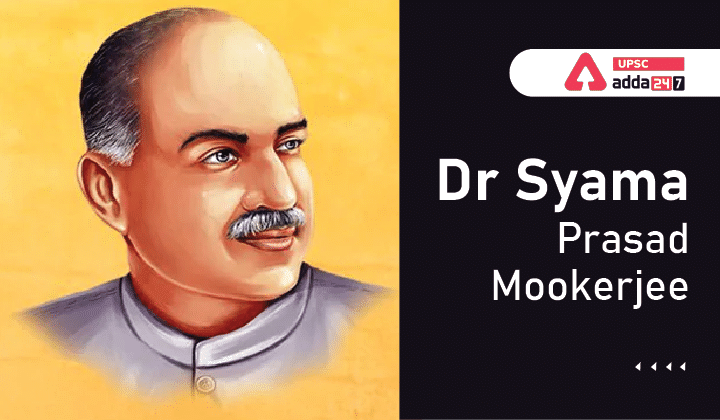Table of Contents
Dr. Syama Prasad Mukherjee- Relevance for UPSC Exam
Dr. Syama Prasad Mukherjee: Dr. Syama Prasad Mukherjee is an important historical figure of Indian Modern History. Dr. Syama Prasad Mukherjee will be part of the UPSC Mains GS Paper 1 (Indian History- Modern Indian history from about the middle of the eighteenth century until the present- significant events, personalities, issues.)
Dr. Syama Prasad Mukherjee in News
- Recently, Union Home and Cooperation Minister Shri Amit Shah has paid tributes to Dr. Syama Prasad Mukherjee on his birth anniversary.
- Shyama Prasad Mukherjee sacrificed his life to work for one nation, one constitution, one flag, ending permit raj from Kashmir and making it an integral part of India.
International Day of Cooperatives 2022: History, Theme and Significance
Dr. Syama Prasad Mukherjee
- Birth: Shyama Prasad Mukherjee was born on 6th July 1901 in a Bengali family. His father Ashutosh Mukherjee was a judge of the Calcutta High Court.
- Education: Early education of Shyama Prasad Mookergee happened in Bhawanipur’s Mitra Institution in 1906.
- Shyama Prasad passed his matriculation exam and was admitted to Presidency College.
- He graduated in English, securing the first position in first class in 1921.
- He enrolled as an advocate in Calcutta High Court in 1924.
- Death: Syama Prasad Mukherjee died in the custody of Jammu and Kashmir Police in 1953.
Dr. Syama Prasad Mukherjee Political Career
- Youngest Vice-Chancellor: In 1934, at the age of 33, Syama Prasad Mukherjee became the youngest Vice-Chancellor of the University of Calcutta.
- He held the office until 1938.
- Association with Hindu Mahasabha: Syama Prasad Mukherjee joined the Hindu Mahasabha in Bengal in 1939 and became its acting president that same year.
- He was also the president of Akhil Bharatiya Hindu Mahasabhafrom 1943 to 1946.
- Member of Constituent Assembly: he was elected as a member of the Constituent Assembly of India in 1946.
- Part of Government: Syama Prasad Mukherjee served as the Minister for Industry and Supply in Prime Minister Jawaharlal Nehru’s first cabinet after Independence.
- However, he resigned from it because of differences of opinion with Nehru-led government on the issue of Jammu & Kashmir.
- Founded the Bharatiya Jana Sangh: He founded the Bharatiya Jana Sangh in 1951 (BJP is the successor of Bharatiya Jana Sangh).
Dr. Syama Prasad Mukherjee’s Views
- On Partition: he was against the Partition of India and supported Congress in 1946 elections because he was assured by Sardar Patel that the Congress would never accept partition.
- On Jammu and Kashmir: Syama Prasad Mukherjee was opposed to India’s policy of autonomy to Jammu & Kashmir provided under Article 370 of Indian Constitution.
- He was arrested during Jana Sangh’s agitation against Indian government’s Jammu and Kashmir policy and died during detention.




 TSPSC Group 1 Question Paper 2024, Downl...
TSPSC Group 1 Question Paper 2024, Downl...
 TSPSC Group 1 Answer key 2024 Out, Downl...
TSPSC Group 1 Answer key 2024 Out, Downl...
 UPSC Prelims 2024 Question Paper, Downlo...
UPSC Prelims 2024 Question Paper, Downlo...
